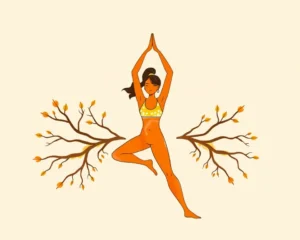Do you dream of celebrating your 100th birthday surrounded by loved ones, with your health and vitality intact? The “Blue Zones,” regions across the globe where people live remarkably long and healthy lives, offer a compelling blueprint for achieving this goal. These areas aren’t just about genetics; they reveal how lifestyle and environment play a crucial role in longevity. Let’s explore the secrets of the Blue Zones and how you can integrate them into your own life.
What are the Blue Zones?
The term “Blue Zones” was coined by Dan Buettner, a National Geographic Fellow and author, who identified five regions with the highest concentrations of centenarians – people who live to be 100 years or older. These zones were initially marked with blue circles on a map during his research, hence the name. While the concept has gained widespread recognition, it’s worth noting that some researchers have questioned the validity of the data and methods used to identify these zones. Nevertheless, the Blue Zones offer valuable insights into lifestyles that support healthy aging.
The five original Blue Zones are:
- Okinawa, Japan: Known for its high number of female centenarians, Okinawans enjoy strong social connections, a plant-based diet rich in soy, and a purpose-driven life.
- Sardinia, Italy: This mountainous island boasts the world’s longest-lived men, who lead active lives as shepherds, drink red wine, and value close family ties.
- Nicoya Peninsula, Costa Rica: Nicoyans thrive on strong faith, family bonds, physical work into old age, and a diet of beans and corn tortillas. Their water is also rich in calcium and magnesium.
- Ikaria, Greece: This Aegean island boasts a Mediterranean diet rich in olive oil, red wine, and homegrown vegetables, along with a relaxed lifestyle that includes afternoon naps.
- Loma Linda, California, USA: This unique Blue Zone is home to a community of Seventh-day Adventists who follow a vegetarian diet, prioritize faith, and maintain strong social networks.
The Power 9: Common Denominators of Longevity
After identifying the Blue Zones, Buettner and his team of researchers sought to understand what these regions had in common. They distilled their findings into nine evidence-based common denominators, known as the “Power 9”. These principles, deeply ingrained in the daily lives of Blue Zone residents, are believed to slow the aging process and promote longevity:
1. Move Naturally
Blue Zones residents don’t hit the gym or run marathons. Instead, they live in environments that constantly nudge them to move without thinking about it. They garden, walk, cook, clean, farm, and do other daily chores. This “fitness snacking” approach involves small bursts of activity throughout the day, rather than intense, scheduled workouts.
How to Apply It:
- Walk More: Choose to walk or bike instead of driving whenever possible.
- Garden: Engage in gardening, which provides physical activity and fresh produce.
- Reduce Convenience: Opt for manual tools and methods instead of relying on mechanical conveniences for house and yard work.
- Take the Stairs: Skip the elevator and take the stairs whenever you can.
2. Purpose
Knowing your sense of purpose is worth up to seven years of extra life expectancy. In Okinawa, it’s called “Ikigai,” and in Nicoya, it’s “plan de vida” – both translate to “why I wake up in the morning.” Having a reason to get out of bed each day provides motivation, direction, and meaning, especially during challenging times.
How to Apply It:
- Reflect on Your Values: Identify what’s truly important to you.
- Pursue Your Passions: Engage in activities that bring you joy and fulfillment.
- Find a Meaningful Outlet: Volunteer, mentor, or contribute to a cause you care about.
- Set Goals: Having something to strive for keeps you engaged and motivated.
3. Down Shift
Even people in the Blue Zones experience stress, but they have routines to shed that stress. Okinawans take time to remember their ancestors, Adventists pray, Ikarians nap, and Sardinians do happy hour. These rituals help to reduce chronic inflammation, which is associated with major age-related diseases.
How to Apply It:
- Practice Mindfulness: Incorporate meditation, deep breathing, or yoga into your daily routine.
- Take Naps: Short daytime naps (30 minutes or less) can reduce stress and improve cognitive function.
- Connect with Nature: Spend time outdoors, which has been shown to lower stress hormones.
- Engage in Hobbies: Pursue activities that you find relaxing and enjoyable.
4. 80% Rule
The Okinawan mantra “Hara hachi bu,” said before meals, reminds them to stop eating when their stomachs are 80% full. This 20% gap between not being hungry and feeling full can be the difference between losing or gaining weight. People in the Blue Zones eat their smallest meal in the late afternoon or early evening and then don’t eat any more for the rest of the day.
How to Apply It:
- Eat Mindfully: Pay attention to your body’s signals of hunger and fullness.
- Use Smaller Plates: This can help you control portion sizes.
- Eat Slowly: Savor each bite and allow your body time to register fullness.
- Avoid Distractions: Turn off the TV and focus on your meal.
5. Plant Slant
Beans, including fava, black, soy, and lentils, are the cornerstone of most centenarian diets. Meat, mostly pork, is eaten on average only five times per month, with serving sizes of 3 to 4 ounces (about the size of a deck of cards).
How to Apply It:
- Prioritize Plant-Based Foods: Make fruits, vegetables, whole grains, and legumes the foundation of your diet.
- Eat Beans Daily: Aim for at least a half cup of cooked beans each day.
- Limit Meat Consumption: Reduce your intake of red and processed meats.
- Choose Healthy Fats: Opt for olive oil and other plant-based oils over animal fats.
6. Wine @ 5
People in all Blue Zones (except Adventists) drink alcohol moderately and regularly. Moderate drinkers outlive non-drinkers. The trick is to drink 1 to 2 glasses per day (preferably Sardinian Cannonau wine), with friends and/or with food. Saving up all week for 14 drinks on Saturday doesn’t count!
How to Apply It:
- Drink in Moderation: Limit your alcohol consumption to 1-2 glasses per day.
- Choose Red Wine: Red wine, especially varieties like Cannonau, contains antioxidants.
- Drink with Food and Friends: Enjoy your drink as part of a social gathering or meal.
7. Belong
All but 5 of the 263 centenarians interviewed belonged to some faith-based community. Denomination doesn’t seem to matter. Research shows that attending faith-based services four times per month will add 4 to 14 years of life expectancy.
How to Apply It:
- Join a Community: Find a group that shares your values and interests, whether it’s a religious organization, a book club, or a volunteer group.
- Attend Services Regularly: Make an effort to participate in community activities.
- Connect with Others: Build meaningful relationships within your community.
8. Loved Ones First
Successful centenarians in the Blue Zones put their families first. This means keeping aging parents and grandparents nearby or in the home (it lowers disease and mortality rates of children in the home too!). They commit to a life partner (which can add up to 3 years of life expectancy) and invest in their children with time and love.
How to Apply It:
- Prioritize Family Time: Make time for meals, activities, and conversations with your loved ones.
- Stay Connected: Maintain close relationships with family members, even if you live far apart.
- Support Aging Parents: Consider providing care or support for your aging parents or grandparents.
- Invest in Your Children: Spend quality time with your children and be involved in their lives.
9. Right Tribe
The world’s longest-lived people chose – or were born into – social circles that supported healthy behaviors. Okinawans created “moais” – groups of five friends that committed to each other for life.
How to Apply It:
- Surround Yourself with Positive Influences: Seek out friends and acquaintances who share your commitment to healthy living.
- Form a Support Group: Create a “moai” or a similar group of like-minded individuals who can provide encouragement and accountability.
- Set Healthy Norms: Encourage healthy behaviors within your social circle.
Integrating Blue Zones Principles into Your Life
While you may not live in a Blue Zone, you can adopt their lifestyle principles to enhance your own health and longevity. Here are some practical ways to get started:
- Start Small: Don’t try to overhaul your entire life at once. Focus on making small, gradual changes that you can sustain over time.
- Focus on Habits: Emphasize building consistent habits rather than relying on quick fixes or extreme measures.
- Create a Supportive Environment: Surround yourself with people and resources that support your healthy lifestyle.
- Be Patient: It takes time to develop new habits and see results. Don’t get discouraged if you don’t see changes immediately.
- Enjoy the Process: Focus on the positive aspects of healthy living, such as feeling better, having more energy, and connecting with others.
Critiques and Considerations
It’s important to acknowledge that the Blue Zones concept has faced some criticism. Some researchers argue that the data supporting the exceptional longevity in these regions is flawed, citing issues with unreliable birth and death records, pension fraud, and clerical errors. For example, a researcher at the University College London (UCL), believes that the apparent longevity of people in the Blue Zones can be explained by pension fraud, clerical errors, and a lack of reliable birth and death records rather than lifestyle factors such as diet or social connections.
Additionally, some studies have questioned the sustainability of the Blue Zones phenomenon, noting declines in life expectancy in certain regions like Okinawa. Other research indicates that Blue Zone claims are inaccurate due to flawed data.
While these critiques raise valid concerns, they don’t necessarily invalidate the core principles of the Blue Zones. Even if the specific longevity claims are exaggerated, the emphasis on healthy habits like plant-based diets, regular physical activity, strong social connections, and a sense of purpose remains relevant and valuable for promoting overall well-being.
Building Healthier Communities
The Blue Zones Project extends beyond individual lifestyle changes to focus on transforming communities. By working with policymakers, local businesses, schools, and individuals, the Blue Zones Project aims to create environments where healthy choices are easier. This involves optimizing policy, urban design, food systems, and social networks to promote well-being for all residents. For example, Blue Zones Project communities have implemented changes such as:
- Building walking paths and bike lanes
- Connecting sidewalks to encourage walking
- Requiring restaurants to offer plant-based entrees
- Making fruit the default side dish instead of fries
A Long and Fulfilling Life
While genetics play a role in longevity, the Blue Zones demonstrate that lifestyle and environment have a significant impact on how long and how well we live. By adopting the Power 9 principles and creating supportive communities, we can increase our chances of living longer, healthier, and more fulfilling lives. The secrets of the Blue Zones aren’t about extreme diets or rigorous exercise programs; they’re about simple, consistent habits that are naturally woven into daily life. So, take inspiration from these remarkable regions and start making small changes today that can add years to your life and life to your years.







